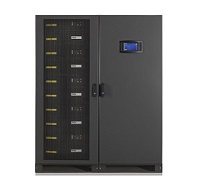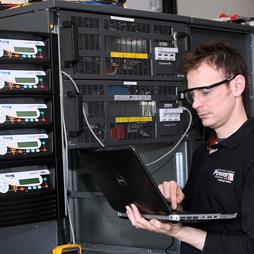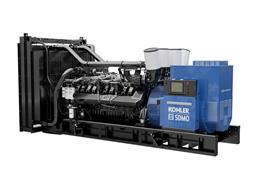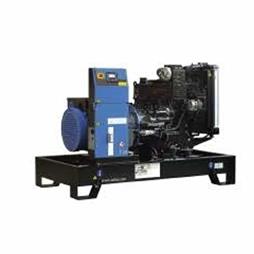Maximising the value of your UPS battery resource
24-05-2011
Alternative UPS energy sources:
Flywheels mechanically store kinetic energy. During normal operation, mains power drives a motor-generator which rotates the flywheel, establishing it as an energy store. In a power outage, this energy is converted back to electrical energy that powers the UPS DC bus. The major problem with flywheels is that they only provide 30 – 45 seconds of back-up time, which is insufficient for most organisations. They are also significantly more costly than a lead-acid battery equivalent.
Lithium ion batteries have future potential for UPS backup. They are smaller and lighter than lead-acid batteries while offering improved backup times. Against this, they are considerably more expensive than comparable lead-acid products, and may explode if overheated or overcharged. However, their small size and high power density is attractive to electric vehicle designers, so much effort is being devoted to developing safer, more compact and more affordable models. These batteries may become commercially viable for UPS applications as a result.
Lead-acid batteries:
Lead-acid batteries comprise a number of cells connected together to deliver the required voltage and capacity. Cells have a nominal voltage of typically 2 V and usually six are connected in series to provide a convenient 12 V block. As a rule, UPSs use either Open-Vented or Valve Regulated Lead Acid (VRLA) lead-acid battery types. Of these, VRLA has become the favoured choice because it is more environmentally friendly and has lower routine maintenance requirements. Also, VRLA’s safe and self-contained construction allows more flexibility in storage and use; battery location within server rooms and office environments as well as separate battery rooms becomes possible.
Ensuring that a VRLA battery installation successfully fulfils its role as an alternative energy source has three aspects. Firstly, battery capacity requirements must be calculated and catered for by considering the load size and the specified back-up or autonomy time. Secondly, users must understand how poor site conditions or high environmental temperatures can limit or terminate battery life, and take preventative action accordingly. Finally, a maintenance plan must be designed and implemented for each UPS installation. This will provide early warning of any issues which can then be remedied before they cause failures.
Load size in kW seen by the battery is based on the critical kVA load, the load’s power factor and the efficiency of the UPS’s rectifier. The autonomy time is the time for which the load must be supported plus, if appropriate, generator start-up and stabilisation time. In choosing the load support time, it is worth considering that statistically 95% of all mains disturbances last for less than 5 minutes, while anything longer usually lasts several hours. A battery autonomy time of 10 – 30 minutes, depending on user requirements, is therefore standard. If possible, the UPS supplier will accommodate batteries within the UPS cabinet. Larger capacities can be handled by additional matching cabinets, or by open or cladded racks. These are normally located in a dedicated battery room with controlled acces
Visit the Kohler Uninterruptible Power website for more information on Maximising the value of your UPS battery resource





